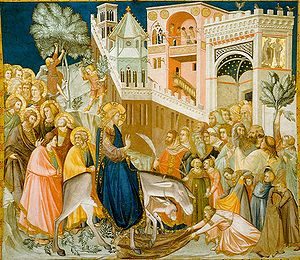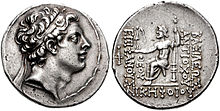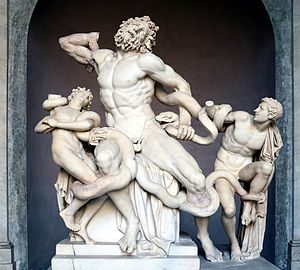Post #40
Dear Readers,
How does ‘Ash Wednesday’ celebrate repentance? Who was Jesus talking to when he encouraged men to repent? What does it mean for a man to repent? Can men sincerely repent?
~~~~~~~//~~~~~~~

“The Word 2.0” References are to pages in the book. And our many thanks to Wikipedia!
~~~~~~~//~~~~~~~
Writing about ‘Ash Wednesday‘, Wikipedia says:
“Ash Wednesday derives its name from the practice of blessing ashes made from palm branches blessed on the previous year’s ‘Palm Sunday‘…
“…and placing them on the heads of participants to the accompaniment of the words:
‘”Repent, and believe in the Gospel“‘
(Page 81 and elsewhere. John’s admonition on page 52.)
or
‘”Remember that you are dust, and to dust you shall return“‘.”
(God’s Word in the Law, B’Resheet/Genesis 3:19b)
~~~~~~~//~~~~~~~
With respect to the words of Jesus, all of which are recorded in “The Word 2.0” along a single, unified timeline, John and the Prophets before him use “Repent” as an verb. There is action that is required and must be taken, be it on a daily basis or even moment to moment as needs be. As with the woman taken for adultery (pages 198 – 199), our goal however is not just ask forgiveness but to change – be different. Jesus calls men especially to not continue doing the things for which acts of repentance are needed – like looking at women with lust and desire (page 88).
This is not a new concept before God as Temple practice long before Jesus included earnest sacrifice. That is of course another discussion. Consider that throughout his ministry, Jesus taught men the same message over and over again. And yet to this very day it appears men still have not gotten the message. So if Ash Wednesday serves no other purpose than to remind men to repent their egoic, selfish, self-centered ways, Peace!

“Entry of Christ into Jerusalem” (1320) by Pietro Lorenzetti: Jesus enters into Jerusalem on a donkey’s colt symbolizing his arrival in peace (the feminine ‘suffering servant’ Messiah) rather than as a “war-waging king” who would arrive on a horse (the masculine ‘warrior-king’ Messiah).
Jesus either introduces us to or comes into contact with many different men. Indeed, many different kinds of men. Wealthy men, middle managers, laborers, professionals, lawyers, religious leaders, and more. Remarkably, yes, many have very similar traits and behave in the same almost predictable ways suggesting men are more the same than they are different. And yes, Jesus was critical of most of them, which we will discuss later, but not just those who were Pharisee-Hellenists. By contrast however, some we might never suspect actually demonstrate the values of Spirit he teaches.
We will discuss God’s words in our next posting.
Shalom – Peace!
Miguel
~~~~~~~//~~~~~~~
We are dedicated to the absolute co-equality and balance between men and women! Our premise is that God created us this way to be whole, complete, unified – as One, through one another, masculine and feminine. That is what Jesus taught men. We are discussing how the Word of God as taught by Jesus of Nazareth was willfully or inadvertently misrepresented or misunderstood such that men came to believe they were somehow more equal.
God is One! We are one! Consider the Sh’ma (Shema):
“Hear O Israel – The Lord our God is One Lord. And you shall love the Lord your God with all your heart, and with all your soul, and with all your mind, and with all your strength.’
This is the first and great commandment.
The second is like it, namely this: You shall love your neighbor as yourself.” (Pages 305 – 306.)
Whether or not you agree please be our “Friend” and “Share” us with your friends!
You are reading one in a series on the “Feminine-ist” teaching of Jesus of Nazareth.
As a Traditionalist Rabbi opposed to Hellenism, Jesus’ teachings are drawn entirely from the Law, the Hebrew-Jewish Scripture and the Traditionalist doctrine of his day. To which he chooses to specifically emphasize God’s Divine Balance – the absolute co-equality, balance, unity, harmony and Oneness of God’s masculine and feminine aspects.
~~~~~~~//~~~~~~~
This weblog, our pamphlets, study guides and other materials are inspired by Miguel’s book, The Word 2.0, a new biography of Jesus of Nazareth in his own words, based upon a single, unified timeline that reveals important new details about his life and ministry! For example that Jesus was not a Hellenist!
~~~~~~~//~~~~~~~
God is undifferentiated masculine and feminine energy in perfect balance, whole, complete, unified, and co-equal. God is neither male nor female, and yet both – inseparable! And as a reflection of God’s Divine Balance, God made each of us manifest as male and female, man and woman, in God’s perfect likeness! Truly a state of grace.
How Adam’s actions brought about the fall from this state of grace is something we will discuss elsewhere. Suffice it to say that long before Jesus was born, men and women were already out of balance. In the more immediate sense of events which took place in Israel before Jesus was born, I found the Seleucid Greek invasion critically important because of the belief system we call “Hellenism” the Greeks forced on the children of Israel at that time.
It may not be especially well known today but the Seleucid Greeks from Syria outlawed our One True God! They forbade the worship of God under the penalty of death. Their King Antiochus IV Epiphanes (Antíochos D’ ho Epiphanḗs, “God Manifest”), believing he was god, decreed the people would have no other god before him.
Hellenism did cause divisions among the people though. On one hand identifying with the Greek empire and culture could enrich certain elite Israelites, but on the other hand their man-worship violated God’s Law. This divided not only those who were “Hellenists”, their supporters and adherents, from those who were “Traditionalists“, but also, apparently, men from women. Why? Because it is also in the nature of Hellenism that women be subordinate to men.
But our One True God was definitely not a Hellenist, right? Given that, Jesus was not a Hellenist – quite the opposite. We might characterize Jesus’ ministry as anti-Hellenist – teaching men in particular about the Divine Balance of God’s Feminine and Masculine aspects, specifically “Feminine-ism“. I briefly outline some basic principles of Jesus of Nazareth’s life and ministry, as they are revealed in “The Word 2.0”:
1. Jesus was a “Traditional” Hebrew-Jewish teacher and Rabbi – to say the very least!
2. Jesus was not a “Hellenist” in any sense of our understanding the word.
3. Jesus espoused and promoted that our One True God – the God of Israel, is a perfect co-equal balance of both masculine and feminine, as is reflected in all Creation.
4. Jesus said that we must love the Lord our God first and foremost, and then love one another as we love ourselves.
5. Jesus taught that love, beginning with God’s “Ruach HaKodesh” – the Breath of Life and Holy Spirit, as aspects of God’s Divine Feminine, is the only way that men can experience the Kingdom of God.
6. Jesus rejected the kind of egocentric, selfish, self-centered thinking and behavior of men that characterizes “Hellenism”.
We will discuss each of these points in much greater detail as we continue, and, look for my study guides they will soon also be available!






